Jing-Cheng Pang
ReLAM: Learning Anticipation Model for Rewarding Visual Robotic Manipulation
Sep 26, 2025Abstract:Reward design remains a critical bottleneck in visual reinforcement learning (RL) for robotic manipulation. In simulated environments, rewards are conventionally designed based on the distance to a target position. However, such precise positional information is often unavailable in real-world visual settings due to sensory and perceptual limitations. In this study, we propose a method that implicitly infers spatial distances through keypoints extracted from images. Building on this, we introduce Reward Learning with Anticipation Model (ReLAM), a novel framework that automatically generates dense, structured rewards from action-free video demonstrations. ReLAM first learns an anticipation model that serves as a planner and proposes intermediate keypoint-based subgoals on the optimal path to the final goal, creating a structured learning curriculum directly aligned with the task's geometric objectives. Based on the anticipated subgoals, a continuous reward signal is provided to train a low-level, goal-conditioned policy under the hierarchical reinforcement learning (HRL) framework with provable sub-optimality bound. Extensive experiments on complex, long-horizon manipulation tasks show that ReLAM significantly accelerates learning and achieves superior performance compared to state-of-the-art methods.
ImagineBench: Evaluating Reinforcement Learning with Large Language Model Rollouts
May 15, 2025Abstract:A central challenge in reinforcement learning (RL) is its dependence on extensive real-world interaction data to learn task-specific policies. While recent work demonstrates that large language models (LLMs) can mitigate this limitation by generating synthetic experience (noted as imaginary rollouts) for mastering novel tasks, progress in this emerging field is hindered due to the lack of a standard benchmark. To bridge this gap, we introduce ImagineBench, the first comprehensive benchmark for evaluating offline RL algorithms that leverage both real rollouts and LLM-imaginary rollouts. The key features of ImagineBench include: (1) datasets comprising environment-collected and LLM-imaginary rollouts; (2) diverse domains of environments covering locomotion, robotic manipulation, and navigation tasks; and (3) natural language task instructions with varying complexity levels to facilitate language-conditioned policy learning. Through systematic evaluation of state-of-the-art offline RL algorithms, we observe that simply applying existing offline RL algorithms leads to suboptimal performance on unseen tasks, achieving 35.44% success rate in hard tasks in contrast to 64.37% of method training on real rollouts for hard tasks. This result highlights the need for algorithm advancements to better leverage LLM-imaginary rollouts. Additionally, we identify key opportunities for future research: including better utilization of imaginary rollouts, fast online adaptation and continual learning, and extension to multi-modal tasks. Our code is publicly available at https://github.com/LAMDA-RL/ImagineBench.
Beyond Simple Sum of Delayed Rewards: Non-Markovian Reward Modeling for Reinforcement Learning
Oct 26, 2024
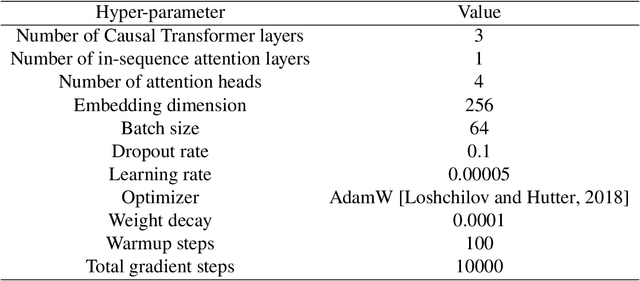
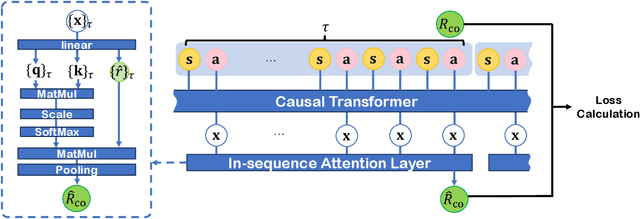

Abstract:Reinforcement Learning (RL) empowers agents to acquire various skills by learning from reward signals. Unfortunately, designing high-quality instance-level rewards often demands significant effort. An emerging alternative, RL with delayed reward, focuses on learning from rewards presented periodically, which can be obtained from human evaluators assessing the agent's performance over sequences of behaviors. However, traditional methods in this domain assume the existence of underlying Markovian rewards and that the observed delayed reward is simply the sum of instance-level rewards, both of which often do not align well with real-world scenarios. In this paper, we introduce the problem of RL from Composite Delayed Reward (RLCoDe), which generalizes traditional RL from delayed rewards by eliminating the strong assumption. We suggest that the delayed reward may arise from a more complex structure reflecting the overall contribution of the sequence. To address this problem, we present a framework for modeling composite delayed rewards, using a weighted sum of non-Markovian components to capture the different contributions of individual steps. Building on this framework, we propose Composite Delayed Reward Transformer (CoDeTr), which incorporates a specialized in-sequence attention mechanism to effectively model these contributions. We conduct experiments on challenging locomotion tasks where the agent receives delayed rewards computed from composite functions of observable step rewards. The experimental results indicate that CoDeTr consistently outperforms baseline methods across evaluated metrics. Additionally, we demonstrate that it effectively identifies the most significant time steps within the sequence and accurately predicts rewards that closely reflect the environment feedback.
Knowledgeable Agents by Offline Reinforcement Learning from Large Language Model Rollouts
Apr 14, 2024



Abstract:Reinforcement learning (RL) trains agents to accomplish complex tasks through environmental interaction data, but its capacity is also limited by the scope of the available data. To obtain a knowledgeable agent, a promising approach is to leverage the knowledge from large language models (LLMs). Despite previous studies combining LLMs with RL, seamless integration of the two components remains challenging due to their semantic gap. This paper introduces a novel method, Knowledgeable Agents from Language Model Rollouts (KALM), which extracts knowledge from LLMs in the form of imaginary rollouts that can be easily learned by the agent through offline reinforcement learning methods. The primary challenge of KALM lies in LLM grounding, as LLMs are inherently limited to textual data, whereas environmental data often comprise numerical vectors unseen to LLMs. To address this, KALM fine-tunes the LLM to perform various tasks based on environmental data, including bidirectional translation between natural language descriptions of skills and their corresponding rollout data. This grounding process enhances the LLM's comprehension of environmental dynamics, enabling it to generate diverse and meaningful imaginary rollouts that reflect novel skills. Initial empirical evaluations on the CLEVR-Robot environment demonstrate that KALM enables agents to complete complex rephrasings of task goals and extend their capabilities to novel tasks requiring unprecedented optimal behaviors. KALM achieves a success rate of 46% in executing tasks with unseen goals, substantially surpassing the 26% success rate achieved by baseline methods. Furthermore, KALM effectively enables the LLM to comprehend environmental dynamics, resulting in the generation of meaningful imaginary rollouts that reflect novel skills and demonstrate the seamless integration of large language models and reinforcement learning.
Empowering Language Models with Active Inquiry for Deeper Understanding
Feb 06, 2024Abstract:The rise of large language models (LLMs) has revolutionized the way that we interact with artificial intelligence systems through natural language. However, LLMs often misinterpret user queries because of their uncertain intention, leading to less helpful responses. In natural human interactions, clarification is sought through targeted questioning to uncover obscure information. Thus, in this paper, we introduce LaMAI (Language Model with Active Inquiry), designed to endow LLMs with this same level of interactive engagement. LaMAI leverages active learning techniques to raise the most informative questions, fostering a dynamic bidirectional dialogue. This approach not only narrows the contextual gap but also refines the output of the LLMs, aligning it more closely with user expectations. Our empirical studies, across a variety of complex datasets where LLMs have limited conversational context, demonstrate the effectiveness of LaMAI. The method improves answer accuracy from 31.9% to 50.9%, outperforming other leading question-answering frameworks. Moreover, in scenarios involving human participants, LaMAI consistently generates responses that are superior or comparable to baseline methods in more than 82% of the cases. The applicability of LaMAI is further evidenced by its successful integration with various LLMs, highlighting its potential for the future of interactive language models.
Language Model Self-improvement by Reinforcement Learning Contemplation
May 23, 2023



Abstract:Large Language Models (LLMs) have exhibited remarkable performance across various natural language processing (NLP) tasks. However, fine-tuning these models often necessitates substantial supervision, which can be expensive and time-consuming to obtain. This paper introduces a novel unsupervised method called LanguageModel Self-Improvement by Reinforcement Learning Contemplation (SIRLC) that improves LLMs without reliance on external labels. Our approach is grounded in the observation that it is simpler for language models to assess text quality than to generate text. Building on this insight, SIRLC assigns LLMs dual roles as both student and teacher. As a student, the LLM generates answers to unlabeled questions, while as a teacher, it evaluates the generated text and assigns scores accordingly. The model parameters are updated using reinforcement learning to maximize the evaluation score. We demonstrate that SIRLC can be applied to various NLP tasks, such as reasoning problems, text generation, and machine translation. Our experiments show that SIRLC effectively improves LLM performance without external supervision, resulting in a 5.6% increase in answering accuracy for reasoning tasks and a rise in BERTScore from 0.82 to 0.86 for translation tasks. Furthermore, SIRLC can be applied to models of different sizes, showcasing its broad applicability.
Natural Language-conditioned Reinforcement Learning with Inside-out Task Language Development and Translation
Feb 18, 2023



Abstract:Natural Language-conditioned reinforcement learning (RL) enables the agents to follow human instructions. Previous approaches generally implemented language-conditioned RL by providing human instructions in natural language (NL) and training a following policy. In this outside-in approach, the policy needs to comprehend the NL and manage the task simultaneously. However, the unbounded NL examples often bring much extra complexity for solving concrete RL tasks, which can distract policy learning from completing the task. To ease the learning burden of the policy, we investigate an inside-out scheme for natural language-conditioned RL by developing a task language (TL) that is task-related and unique. The TL is used in RL to achieve highly efficient and effective policy training. Besides, a translator is trained to translate NL into TL. We implement this scheme as TALAR (TAsk Language with predicAte Representation) that learns multiple predicates to model object relationships as the TL. Experiments indicate that TALAR not only better comprehends NL instructions but also leads to a better instruction-following policy that improves 13.4% success rate and adapts to unseen expressions of NL instruction. The TL can also be an effective task abstraction, naturally compatible with hierarchical RL.
Regret Minimization Experience Replay
Jun 06, 2021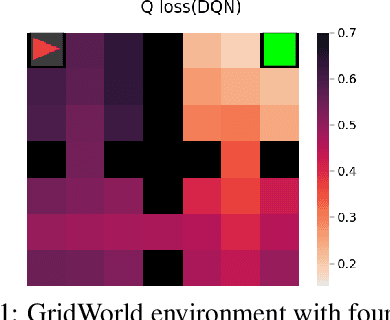

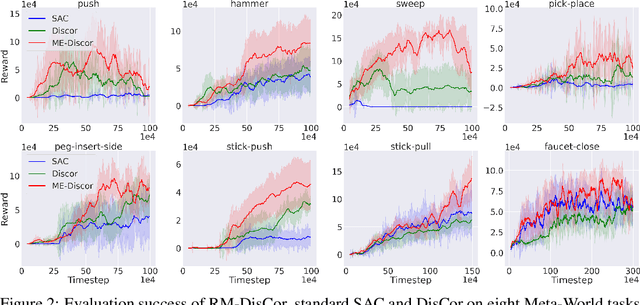
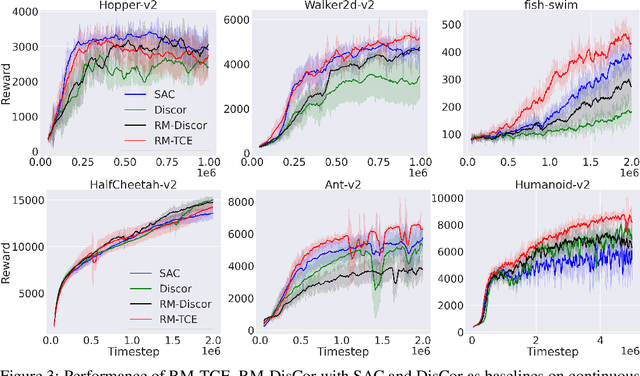
Abstract:In reinforcement learning, experience replay stores past samples for further reuse. Prioritized sampling is a promising technique to better utilize these samples. Previous criteria of prioritization include TD error, recentness and corrective feedback, which are mostly heuristically designed. In this work, we start from the regret minimization objective, and obtain an optimal prioritization strategy for Bellman update that can directly maximize the return of the policy. The theory suggests that data with higher hindsight TD error, better on-policiness and more accurate Q value should be assigned with higher weights during sampling. Thus most previous criteria only consider this strategy partially. We not only provide theoretical justifications for previous criteria, but also propose two new methods to compute the prioritization weight, namely ReMERN and ReMERT. ReMERN learns an error network, while ReMERT exploits the temporal ordering of states. Both methods outperform previous prioritized sampling algorithms in challenging RL benchmarks, including MuJoCo, Atari and Meta-World.
Sparsity Prior Regularized Q-learning for Sparse Action Tasks
May 19, 2021

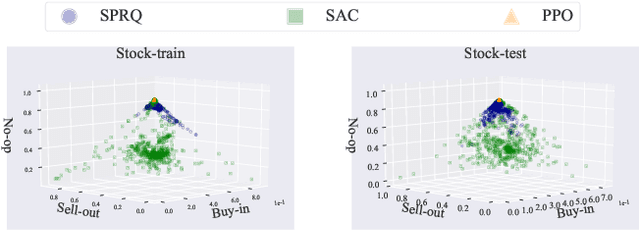
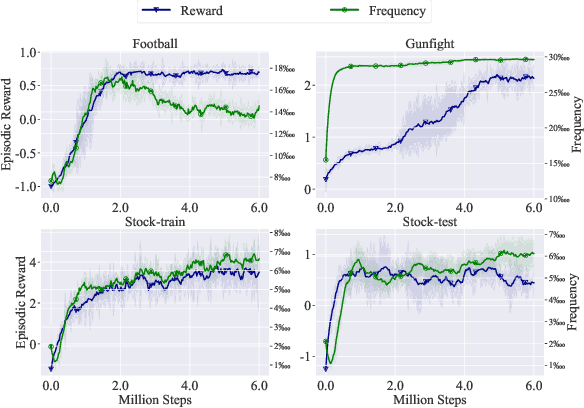
Abstract:In many decision-making tasks, some specific actions are limited in their frequency or total amounts, such as "fire" in the gunfight game and "buy/sell" in the stock trading. We name such actions as "sparse action". Sparse action often plays a crucial role in achieving good performance. However, their Q-values, estimated by \emph{classical Bellman update}, usually suffer from a large estimation error due to the sparsity of their samples. The \emph{greedy} policy could be greatly misled by the biased Q-function and takes sparse action aggressively, which leads to a huge sub-optimality. This paper constructs a reference distribution that assigns a low probability to sparse action and proposes a regularized objective with an explicit constraint to the reference distribution. Furthermore, we derive a regularized Bellman operator and a regularized optimal policy that can slow down the propagation of error and guide the agent to take sparse action more carefully. The experiment results demonstrate that our method achieves state-of-the-art performance on typical sparse action tasks.
Improving Fictitious Play Reinforcement Learning with Expanding Models
Nov 28, 2019


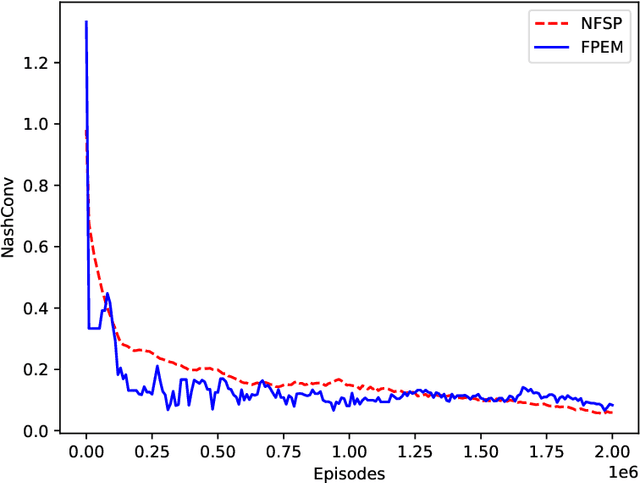
Abstract:Fictitious play with reinforcement learning is a general and effective framework for zero-sum games. However, using the current deep neural network models, the implementation of fictitious play faces crucial challenges. Neural network model training employs gradient descent approaches to update all connection weights, and thus is easy to forget the old opponents after training to beat the new opponents. Existing approaches often maintain a pool of historical policy models to avoid the forgetting. However, learning to beat a pool in stochastic games, i.e., a wide distribution over policy models, is either sample-consuming or insufficient to exploit all models with limited amount of samples. In this paper, we propose a learning process with neural fictitious play to alleviate the above issues. We train a single model as our policy model, which consists of sub-models and a selector. Everytime facing a new opponent, the model is expanded by adding a new sub-model, where only the new sub-model is updated instead of the whole model. At the same time, the selector is also updated to mix up the new sub-model with the previous ones at the state-level, so that the model is maintained as a behavior strategy instead of a wide distribution over policy models. Experiments on Kuhn poker, a grid-world Treasure Hunting game, and Mini-RTS environments show that the proposed approach alleviates the forgetting problem, and consequently improves the learning efficiency and the robustness of neural fictitious play.
 Add to Chrome
Add to Chrome Add to Firefox
Add to Firefox Add to Edge
Add to Edge